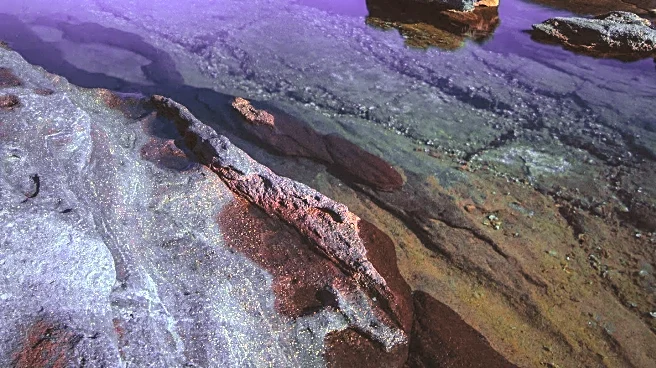What's Happening?
Swift Networks has introduced Swift TV, a new communication platform designed for remote mining camps. This system aims to modernize communication by providing real-time updates and entertainment directly
to workers' TVs. Swift TV is a plug-and-play system that operates on Google-certified software and hardware, offering features such as on-demand content, safety alerts, and site updates. It is currently used across nearly 12,000 screens at mining sites operated by major companies like BHP and Rio Tinto. The system is set to go live in January 2026, providing a direct line of communication for workers who may not have access to email or intranet.
Why It's Important?
The introduction of Swift TV is significant as it addresses the communication challenges faced by remote mining operations. By providing a direct and efficient communication channel, it enhances worker engagement and safety. The system's ability to deliver critical updates and entertainment can improve the overall working environment, potentially increasing productivity and worker satisfaction. For mining companies, this represents a shift from traditional satellite TV to a more integrated and flexible solution, which could lead to cost savings and operational efficiencies.
What's Next?
Swift Networks plans to expand the use of Swift TV beyond Australia, targeting international mining operations. The company aims to transition to a fully cloud-based system by 2028, which would allow for broader deployment in areas with limited infrastructure. As awareness of the system grows, more mining companies may adopt this technology, leading to further innovations and enhancements in remote communication solutions.
Beyond the Headlines
The deployment of Swift TV could have broader implications for other industries facing similar communication challenges, such as aged care and oil and gas. The system's ability to provide tailored content and real-time updates could be adapted to meet the needs of various sectors, potentially transforming how information is disseminated in remote or isolated environments.












